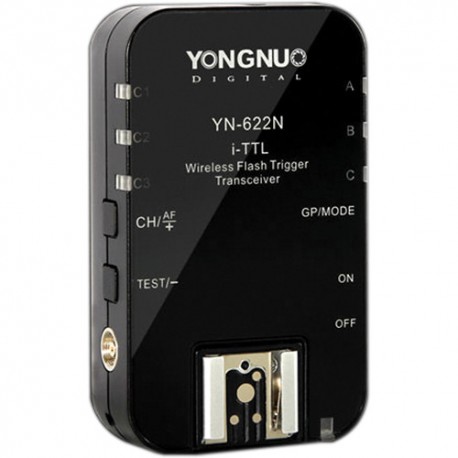

- #Setting up yongnuo 622n for nikon supersync how to
- #Setting up yongnuo 622n for nikon supersync manual
- #Setting up yongnuo 622n for nikon supersync full
The glossy coating of the transceivers gets scuffed easily, but this doesn’t affect performance so, it's not really a concern for me. They don't feel flimsy by any means, but they don't feel exceptionally rugged either.

The build is what’s to be expected when dealing with cheaper products. Granted, I have never had a reason to get crazy far distances away from my flash, but I never had an issue with it being across a field or having the flash be inside while I was outside. When using the unit, I never once had an issue with the flash not firing or being out of range. It’s all very intuitive and easy to grasp.

#Setting up yongnuo 622n for nikon supersync full
When changing flash power, you use the directional pad horizontally to change by full stops and vertically to change by third stops. Each button works by pressing it to select what option you want to change, then using the directional pad to change the setting. This means no diving into menus and settings to view or change a parameter. The dedicated TX transmitter has a button for everything you can control from the unit and each setting is displayed on the screen. The transceiver has three buttons and a switch on the unit: one button to cycle through the groups, one button to cycle through the channels, a test button, and a switch to power the device on and off.
#Setting up yongnuo 622n for nikon supersync how to
The buttons on the transmitter are all very straightforward and it’s easy to figure out how to change all the settings. After this quick process, everything just worked. All I had to do was plug my flash into the transceiver, plug the transmitter into my camera, make sure my flash was set to TTL (I don't think the flash has to be in TTL for Canon users), and then confirm that the transceiver and trigger were on the same channel. I was surprised by how easy it was to set everything up.
#Setting up yongnuo 622n for nikon supersync manual
You can also switch from manual to TTL from the transmitter without having to touch your flash. This transmitter not only gives you the ability to adjust the flash power in manual and TTL, it also gives you the option to adjust the zoom of each flash in addition to all the other features offered in the Yongnuo-622n transceivers. The problem is that you have to adjust the TTL flash power from within the camera settings by using flash compensation and if you want to control the flash power in manual, you are stuck having to adjust it from the flash.Įnter the Yongnuo-622n TX. With this simple $77 solution (not including your flash), you now have the ability to trigger your flash in manual, TTL, use high speed sync, and trigger multiple flashes based on groups and channels (with multiple flashes and triggers). One transceiver connects to your camera and acts as the trigger, while the second transceiver connects to your flash and acts as the receiver. Support USB firmware upgrade.In order to get your flash off camera, all you need are two Yongnuo-622n flash transceivers that are compatible with your TTL flash. In addition, it supports setting different focal length(zoom)of the three groups of flash, the remote-controlled distance can reach 100M, supporting seven wireless channels and A/B/C three groups, and equipped with the AF-assist beam emitter.


 0 kommentar(er)
0 kommentar(er)
